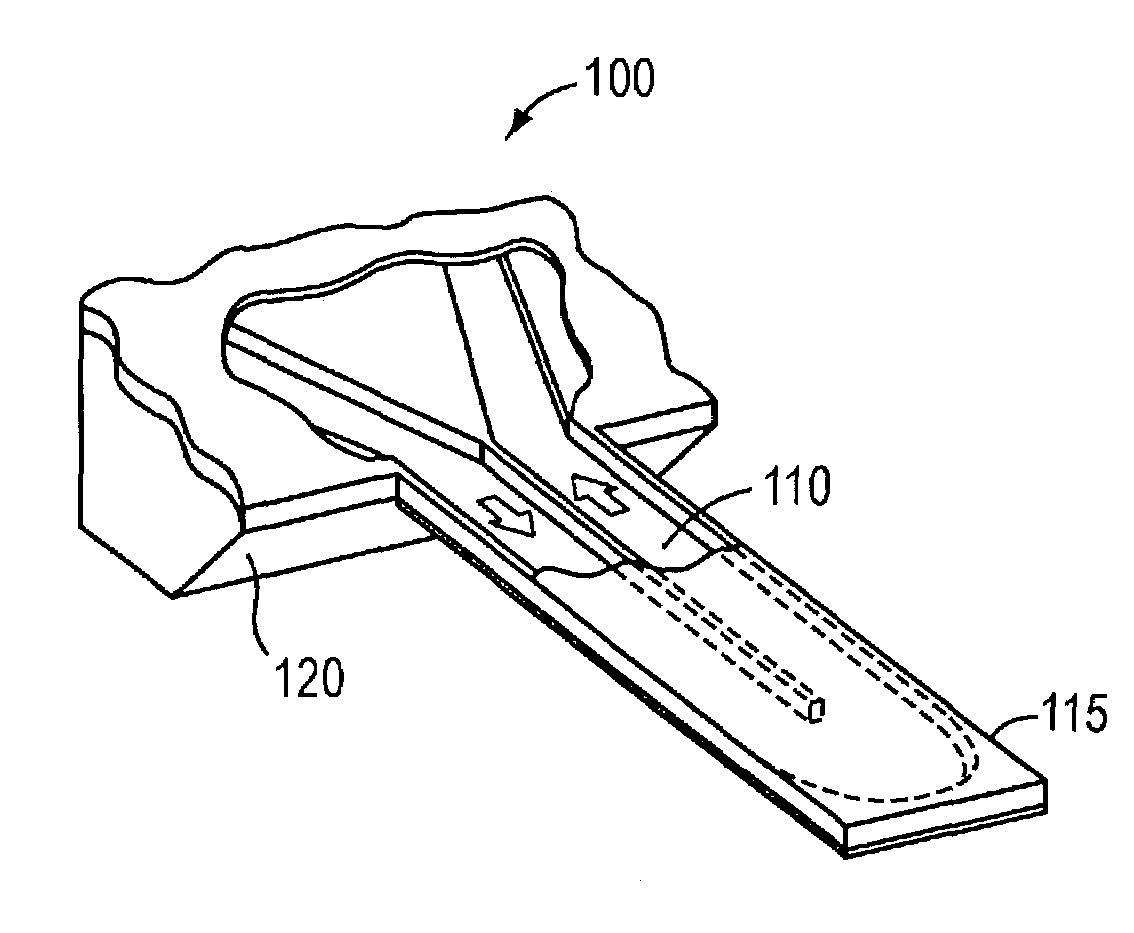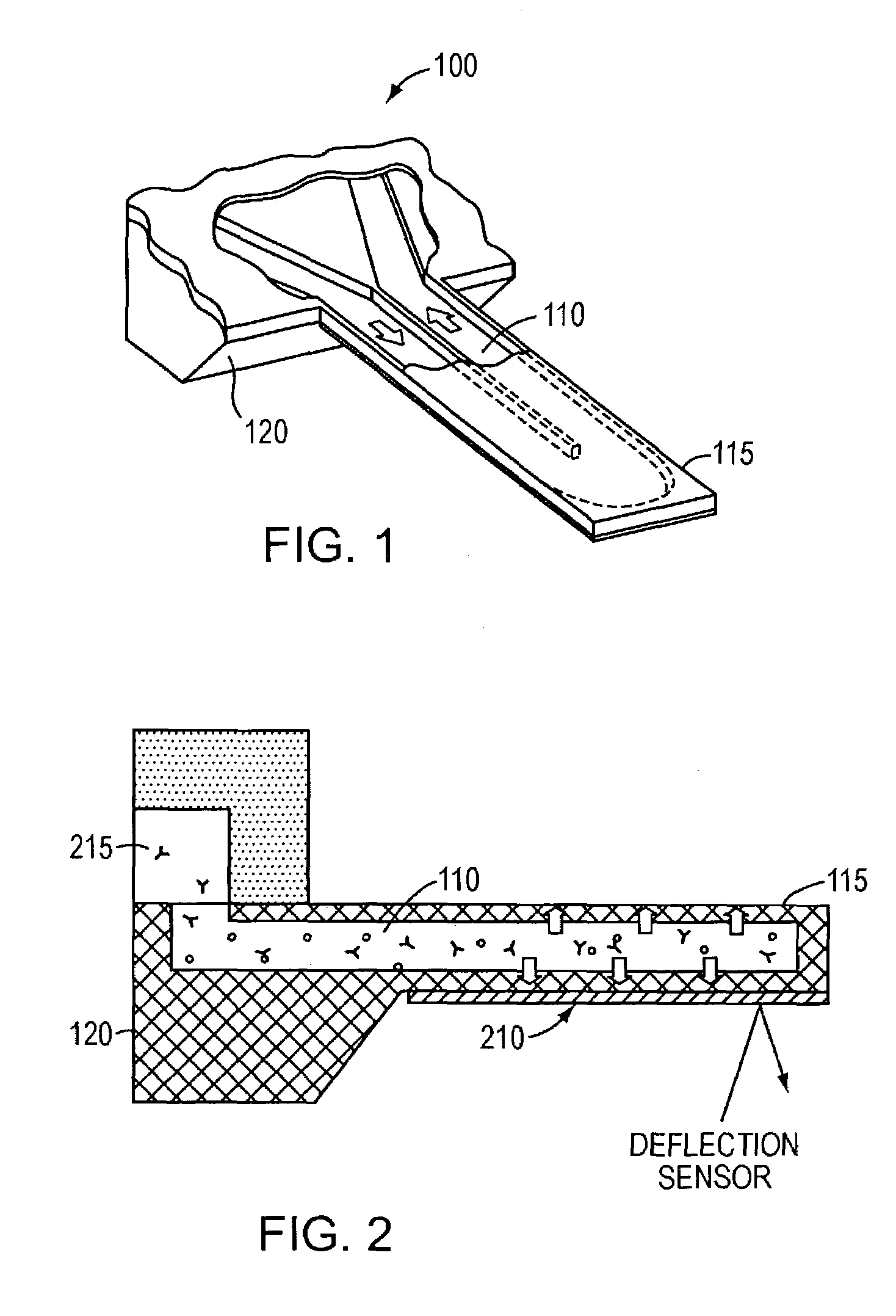Measurement of concentrations and binding energetics
a technology of concentration and energetics, applied in the field of measuring concentrations and binding energetics, can solve the problems of high labor intensity, limited rate at which these parameters are measured by current methodology, and high labor intensity,
- Summary
- Abstract
- Description
- Claims
- Application Information
AI Technical Summary
Benefits of technology
Problems solved by technology
Method used
Image
Examples
Embodiment Construction
[0032]Refer first to FIG. 1, which illustrates the basic configuration of an analytical cell 100 useful in connection with the present invention. The device 100 includes a U-shaped, free-standing microfluidic channel 110 defined as a hollow within an elongated, finger-like cantilever 115 that projects from (and is integral with or joined to) a mechanically stable supporting substrate 120. Fluid flowing through a channel within the substrate enters the cantilever 115 and traverses the channel 110 as indicated by the arrows.
[0033]In one configuration, calorimetric measurements are accomplished by detecting the bending of a thermal bimorph. As shown in FIG. 2, the bimorph comprises the cantilever 115 containing a microfluidic channel 110 and a material (e.g., a metal, such as gold or aluminum) 210 that is deposited on the exterior surface of the cantilever 115. The material 210 has a coefficient of thermal expansion different from that of the cantilever 115. As a result, a temperature ...
PUM
| Property | Measurement | Unit |
|---|---|---|
| volumes | aaaaa | aaaaa |
| mass resolution | aaaaa | aaaaa |
| volume | aaaaa | aaaaa |
Abstract
Description
Claims
Application Information
 Login to View More
Login to View More - R&D
- Intellectual Property
- Life Sciences
- Materials
- Tech Scout
- Unparalleled Data Quality
- Higher Quality Content
- 60% Fewer Hallucinations
Browse by: Latest US Patents, China's latest patents, Technical Efficacy Thesaurus, Application Domain, Technology Topic, Popular Technical Reports.
© 2025 PatSnap. All rights reserved.Legal|Privacy policy|Modern Slavery Act Transparency Statement|Sitemap|About US| Contact US: help@patsnap.com



